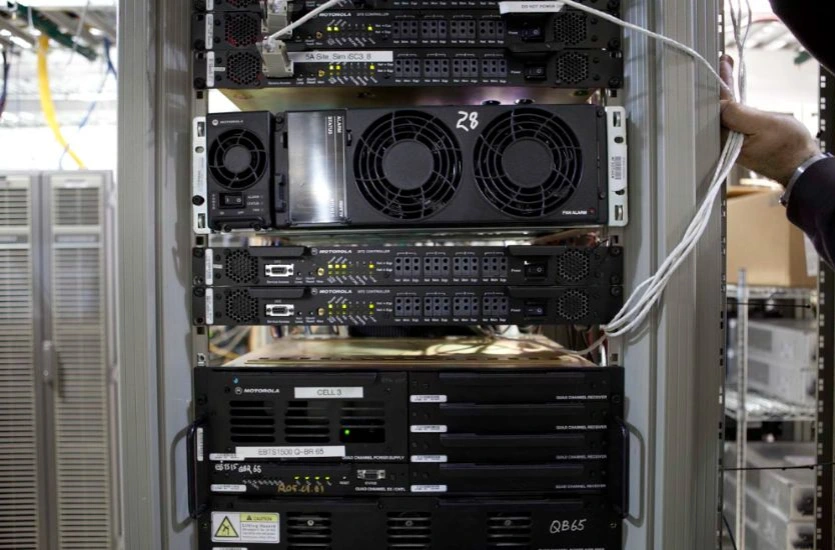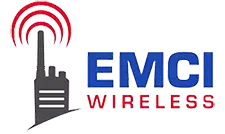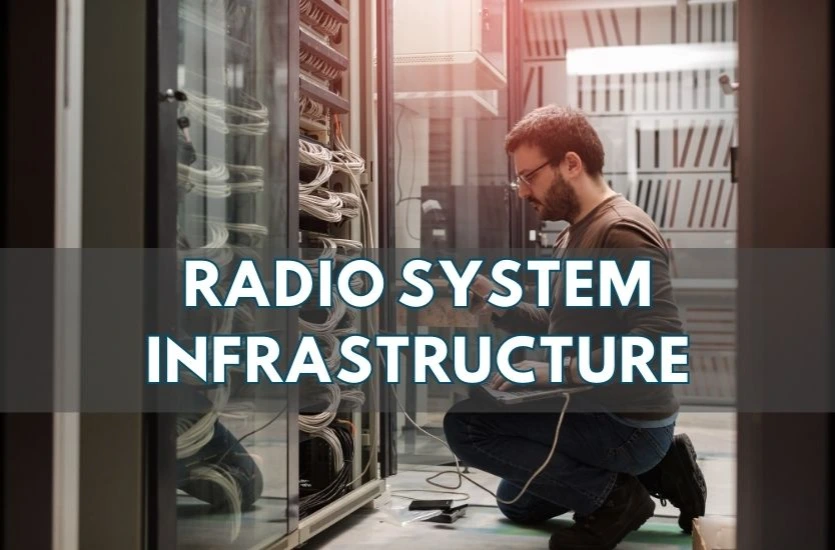Radio system infrastructure is the backbone for communication and includes essential equipment permanently installed at specific facilities. Radio system equipment, such as two-way radio repeaters, controllers, and gateways process communications across various radio frequency spectrums and allow for instantaneous team communications in the moments that matter most.
This article explores key components of this infrastructure—repeaters, controllers, and gateways. Discover how these elements amplify signals, orchestrate communication efforts, and seamlessly connect networks, which is vital in enhancing communication across various industries.
What are Repeaters, Controllers, and Gateways?
Repeaters, controllers, and gateways form the robust foundation of your MOTOTRBO two-way radio system, ensuring its seamless operation. Acting as the invisible pillars, these components work tirelessly to keep your radio network up and running 24/7.
Their mission is clear: to guarantee communication that is not just available but consistently clear, reliable, and secure across your entire enterprise. Repeaters serve as the signal boosters, extending the reach of your communication. Controllers act as the conductors, orchestrating the symphony of communication efforts. Gateways, on the other hand, play the role of connectors, linking networks seamlessly.
Let’s dig into these key components a bit further.
What are Repeaters?
A repeater empowers communication by enhancing coverage, penetration, and range. Imagine it as a communication booster, making the impossible possible. Here’s the magic: a repeater deftly receives radio signals on one frequency, then, like a skilled conductor, simultaneously transmits the voice and data information on another frequency. This wizardry allows two-way radios to reach farther, penetrate obstacles better, and cover more ground than they could on their own.
Think of a repeater as the heavyweight champion of radios. While portable radios operate at five watts or less and mobile radios at 45 watts or less, repeaters take it up a notch, wielding an impressive power output of up to 100 watts. Stationed at fixed positions in specific geographic locations with antennas designed to optimize two-way radio system coverage, repeaters act as communication powerhouses, ensuring that your messages travel far and wide.
What are Controllers?
Controllers in a MOTOTRBO two-way radio system are the brains behind the operation, ensuring that every message finds its way seamlessly. These behind-the-scenes commanders manage the flow of communication, directing and coordinating the efforts of radios within the network.
The role of controllers goes beyond just the transmission itself. They handle the intricacies of call setup, ensuring that conversations kick off smoothly. Controllers also manage features like group calls, private calls, and data applications, making them essential for customized and efficient communication.
Controllers wield the power to link multiple repeaters, extending the reach of your communication network. With advanced technologies such as MOTOTRBO Capacity Max, the Capacity Max System Server (CMSS) controls subscriber ID validation on every single radio key up, authorizing and denying access to individual radios based upon the information database loaded into the CMSS. This means that if a radio is lost or stolen, the subscriber ID of the device can be disabled in the controller, ensuring that rogue radios are not operating on the system. In essence, controllers act as traffic managers, ensuring that every transmission is authorized and takes the optimal route for clear, reliable, and secure communication.
What are Gateways?
At the core of a two-way radio, the most basic functionality is instantaneous communication. Push-to-talk and release-to-listen. However, have you ever wondered about the magic behind connecting radios to 3rd party software and advanced integrations such as alerts from a video camera system being automatically pushed to a two-way radio? The radio gateway is a networking wizard making this seamless integration possible. Picture a radio gateway as a smart connector, forwarding audio and data packets between commercial two-way radios, dispatch software, and mobile clients. But its prowess extends beyond mere forwarding.
A comprehensive radio gateway isn’t just a link; it’s a centralized powerhouse for your communication ecosystem. Imagine sending multimedia and text messages via radio, sharing location information, receiving automatic alerts from your Video Management System (VMS), and seamlessly integrating your two-way radio system with cellular phone mobile applications and web-based dispatch applications—all facilitated by the versatility of a radio gateway.
A radio gateway, such as the Motorola Edge Node, is the bridge between your radios and the digital realm, bringing efficiency and modern functionality to your communication network.

How Do Repeaters, Controllers, and Gateways Work Together?
Repeaters, controllers, and gateways collaborate seamlessly to create a robust and efficient MOTOTRBO two-way radio system.
Repeaters, the signal boosters, play a crucial role in extending the network’s reach. As radio signals travel, repeaters receive them on one frequency and amplify them before simultaneously transmitting on another frequency. This amplification ensures better coverage, penetration through obstacles, and an overall extended range for two-way radios.
As mentioned above, controllers manage the flow of communication within the network. They handle call setups, manage different communication features, and coordinate the efforts of radios. Controllers also can link multiple repeaters, enhancing the overall coverage and efficiency of the communication network.
The gateways bridge the gap between radios and additional technologies such as video, push-to-talk over cellular, dispatch consoles, and 3rd party software applications. Gateways forward audio packets and send data to repeaters and controllers, creating a seamless ecosystem of safety and security. They are like digital couriers, ensuring that your radios flawlessly communicate with dispatch systems and enabling modern functionalities like text messages, location sharing, cellular integration, and automatic alert triggering.
The system gains unparalleled strength in the collaborative effort of these three components. Repeaters amplify signals, controllers manage the flow, and gateways connect it all together.
EMCI Wireless is Your Two-Way Communication Partner
To sum it up, repeaters, controllers, and gateways are like the superheroes of radio systems. Repeaters boost signals, Controllers manage the communication flow, and Gateways connect radios to alternate technology sources.
Now, when it comes to trustworthy partners in this radio adventure, think EMCI Wireless. We’ve been doing this for a whopping 48 years! Based in Sebring, Florida, we’re your go-to folks for top-notch wireless solutions. Teaming up with Motorola Solutions, we’re the experts you need for mission-critical or everyday wireless networks.
Whether it’s designing systems or fixing glitches, we’ve got your back. We’re not just big in experience but also one of the biggest Motorola Solutions Channel Partners in sunny Florida. Focused on helping government and businesses communicate seamlessly, we’ve got the latest MOTOTRBO digital radios and APX P25 public safety radios.
EMCI Wireless – where your wireless worries find their solutions!






